Description
dhurrumuwuy marika
Earth pigments on Stringybark
70 x 133cm
Year: 2013
ID: 4361A
Rulyapa
This miny’tji represents Rulyapa, the rough saltwater country between Nhulunbuy and the large island of Dhambaliya, ballooning up from the secret depths, around the sacred rock Manhala, which can be a manifestation of Daymirri. Daymirri is the whale (or perhaps sea monster) that according to Rirratjiŋu and Djambarrpuyŋu clan manikay (sacred song) pertains to the saltwater country close to Yirrkala. The dome-shaped rock Manhala exposes itself at the low tide, above the raŋ (tide marks), bleached white, a patina of brine and weather. Manhala is one of many names given to the rock. Djambarrpuyŋu and Rirratjiŋu clans have many ‘deep’ names that are intoned by the ritual specialists at the culmination of appropriate ceremony. The sea surrounding the rock, its tidal movements, differing states and the effect it had on Yolŋu visiting this site in Ancestral times is all recorded in the sacred song. As are all the totemic species of marine life that has these ancestral connections to the Rirratjiŋu and Djambarrpuyŋu. Often painted in this design is Daymirri the whale, Balpa the rock cod, Djumbarr the red emperor, Ḏarrpa the king brown snake and Mutjalanydjal, the dolphin. All of these things and all of their meanings are implied simply by the presence of the miny’tji for the water. It’s not just Manhala and the power associated with deep seated knowledge that makes this area both sacred and dangerous to those entering with out authority. There are three other rocks in the area of same qualities but these ones; Wakwakbuy, Mulŋuwuy and Dharrpawuy, are submerged. Another related ancestral force within these waters is as the Banduk Marika writes below; “Minyipa and Dhaŋgatjiya were young sons of Mururruma who we refer to as the Grandfather of our family. Mururruma was killed in a ritual spearing by the family of his young wife who Mururruma had killed because she had constantly complained about being separated from her own family. After killing Mururruma on the mainland, the warriors of the young wife’s family pursued his sons Minyipa and Dhaŋgatjiya across the sea to Dhambaliya but were themselves defeated. For their stealth and courage in the battle Minyipa and Dhangatjiya became renown Waŋarr (spirit forms living in times past), to the Rirratjiŋu and Djambarrpuyŋu people. As Gutharra (Grandchild/Rirratjiŋu) and Märi (Grandfather/Djambarrpuyŋu) clans to each other – “Gutharra is the body of the Märi” – these two clans share responsibility for areas of the mainland and Dhambaliya It was between the island and the mainland the Minyipa and Dhaŋgatjiya hunted turtle after their escape. To the end of their long lives they placed the shells of the turtles that they caught in rows of lines on the beach of Dhambaliya between Rompuy and Rowak (a distance of about two Kms). From that place the cooked meat was distributed to their families. My father Mawalan during his life relived waŋarr law by assiduously following daily its customs. He to was a great turtle hunter, going out in pursuit of them in his canoe Galnayalma which he had fashioned by hand from a giant malaleuca tree. In his bark painting of Minyipa and Dhaŋgatjiya done in the 1950’s Mawalan showed them hunting turtle. As he painted my father would retell the stories relating to Minyipa and Dhaŋgatjiya from the Waŋarr to those gathered around him. These Ancestral Hunters are now rocks that are still seen today as prominent parts of the beach under Galariya. We use these rocks as a wishing place. The rocks are covered with offerings (stones and lumps of coral), thrown on top byYolngu anticipating a good catch. Daymirri the whale swims in the same waters. When a particularly large turtle was speared, one of the hunters jumped into the water to try and push the turtle into the canoe. Daymirri caught this hunter within his whiskers and swallowed him. Next morning the people found the body of the man that the whale had spewed up but it was bleached white. Whale rock protrudes the surface of these waters, its top is white from resting birds, standing firm against the tidal movements and rough seas. A metaphor of Rirratjiŋu and Djambarrpuyŋu culture – solid as a rock.”
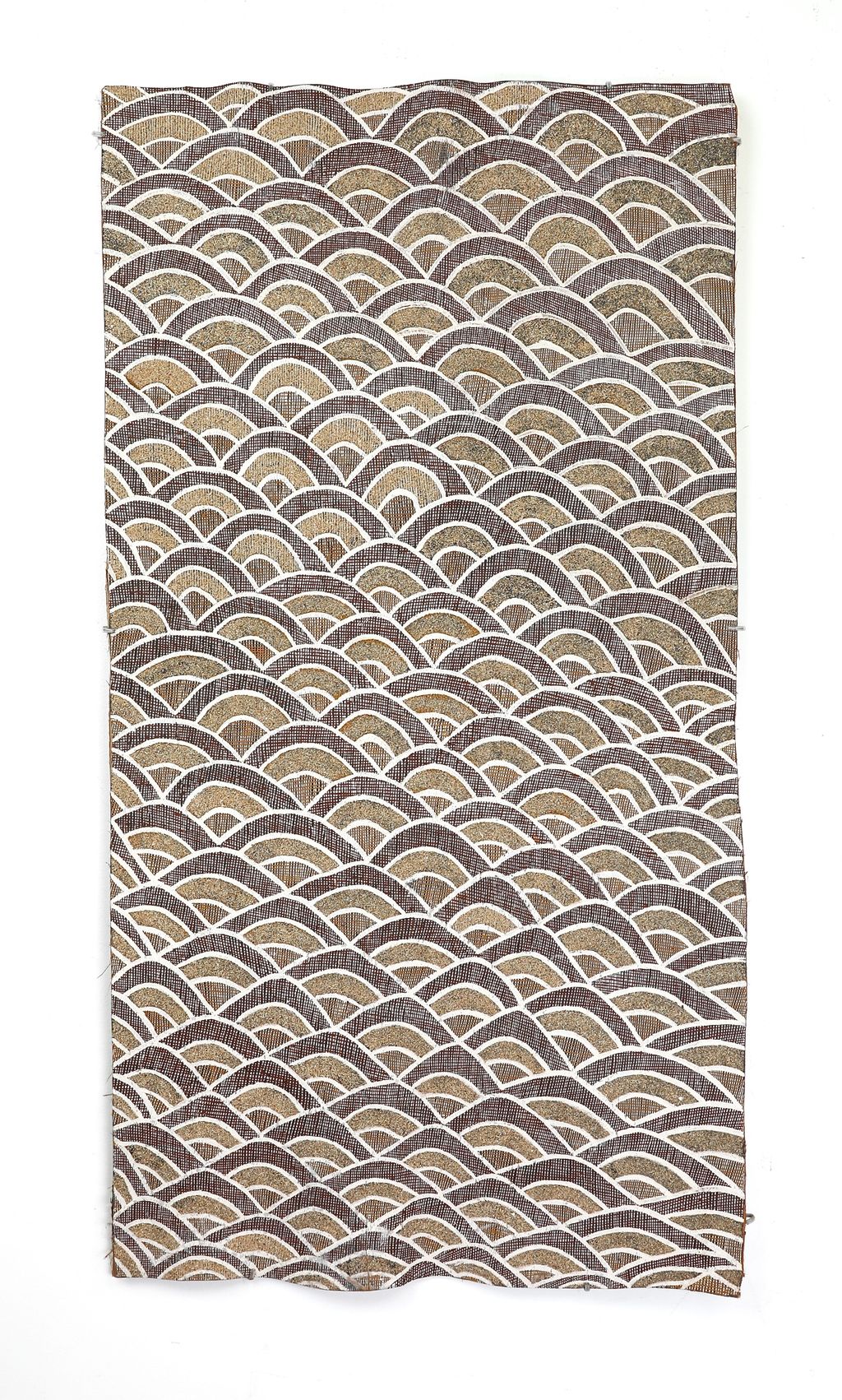

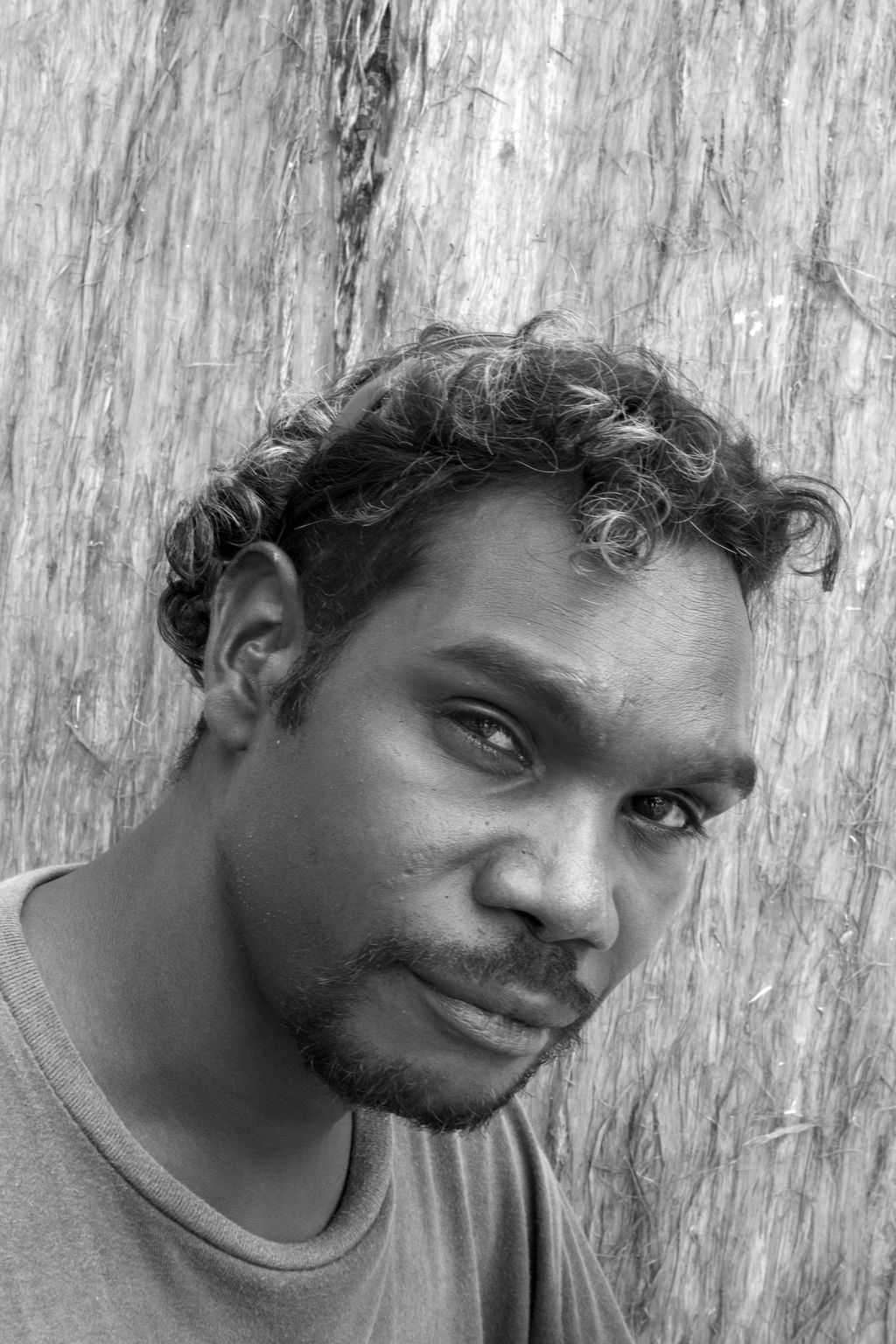
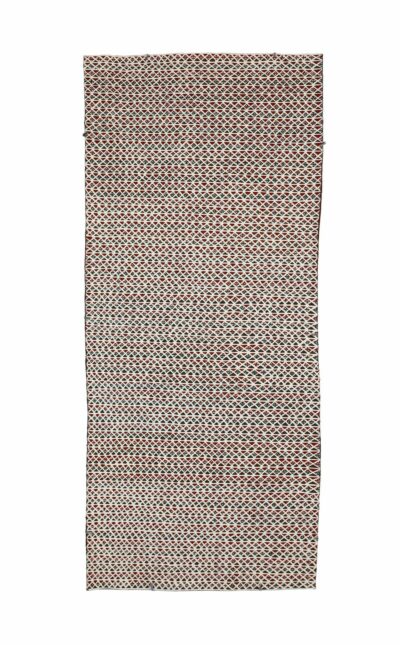
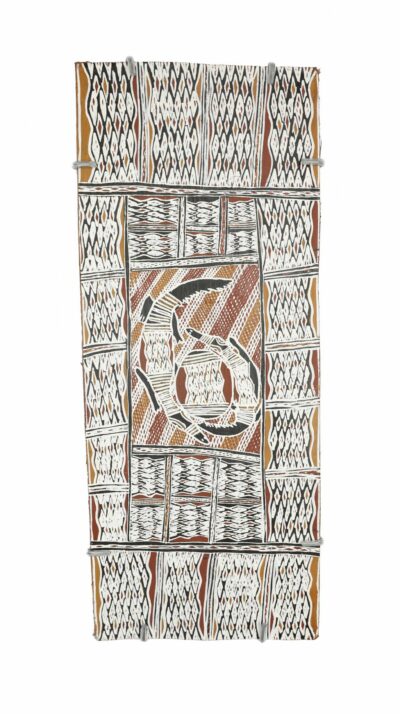
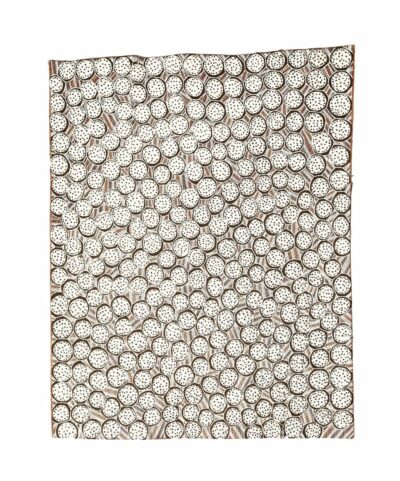
Reviews
There are no reviews yet.